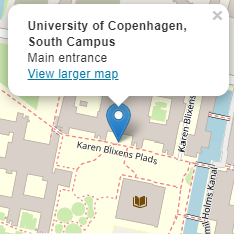Body, Home, and Sanctuary: Textiles in the Ancient Mediterranean

Lecture by Dr. Mary Louise Hart, J. Paul Getty Museum, Associate Curator of Antiquities.
Abstract
This seminar will chart the progress of research toward an international exhibition on the wide-ranging significance of textiles in the ancient Mediterranean, stemming from extraordinary features of their manufacture and trade to their many functions as conveyors of social and cultural meaning. Since textiles were worn by people, because their environments were decorated by woven hangings and rugs, and because textiles were valued gifts to the gods, the objects are divided into three major categories: Body, Home, and Sanctuary.
These topics will cover a variety of issues including: materials (fibers, dyes and metals), geography, chronology, economics and trade, artistry, archaeology, the iconography and politics of dress, ritual, burial, color, literature, craft, society, gender, identity, design and architecture. Research methodologies on textiles from the Bronze Age through classical Greece, Etruria, and the geographically larger sweep of the Roman Empire up to the end of the late antique period (7th century) demonstrate the cross-disciplinarity of this field and reflect the collaborative nature of its international scholarly community. The exhibition intends to draw upon the collections of often unpublished ancient textiles housed in the major museums of the United States and Europe, including the Louvre, the British Museum, the Metropolitan Museum, the Boston Museum of Fine Arts, the Brooklyn Museum, the Cleveland Museum of Art, the Detroit Institute of Arts, the Victoria and Albert Museum in London, the Musée des Tissus (Lyon), the Museo Archaeologico Nazionale (Naples), the German Textile Museum (Krefeld), and others.
We hope to respond to the perception that: “There are very few textiles from ancient Greece and Italy and this fact may hinder any attempted survey of the weaving practices of Antiquity and of the character of woven clothing.” Especially important for Greece and Rome, in the absence of surviving clothes, how can we use sculpture (and the context of its ancient presentation) in determining the meaning and communication of style; how can we make use of recent advances in the discovery of pigments on sculptures? Following, can pigment analysis tell us anything about ancient weaving and dyes?

